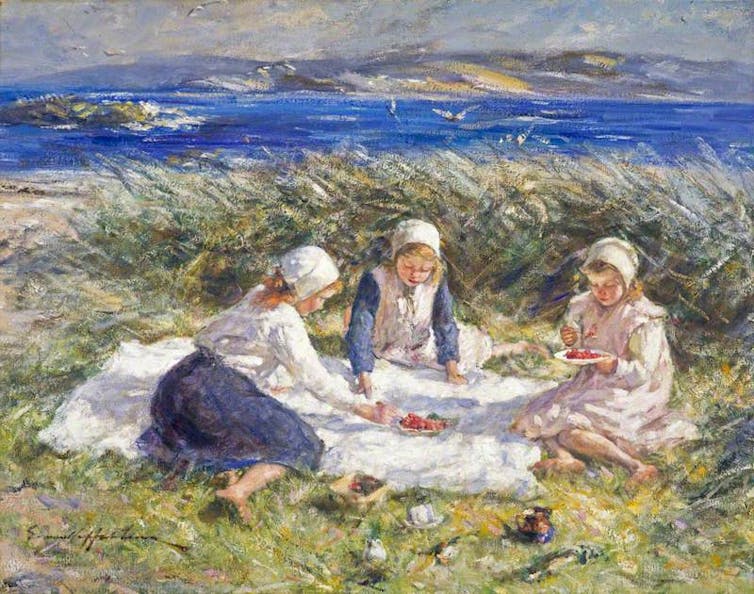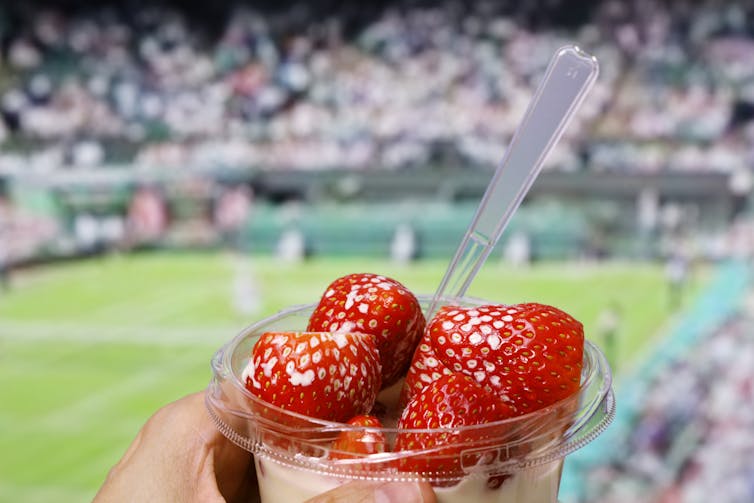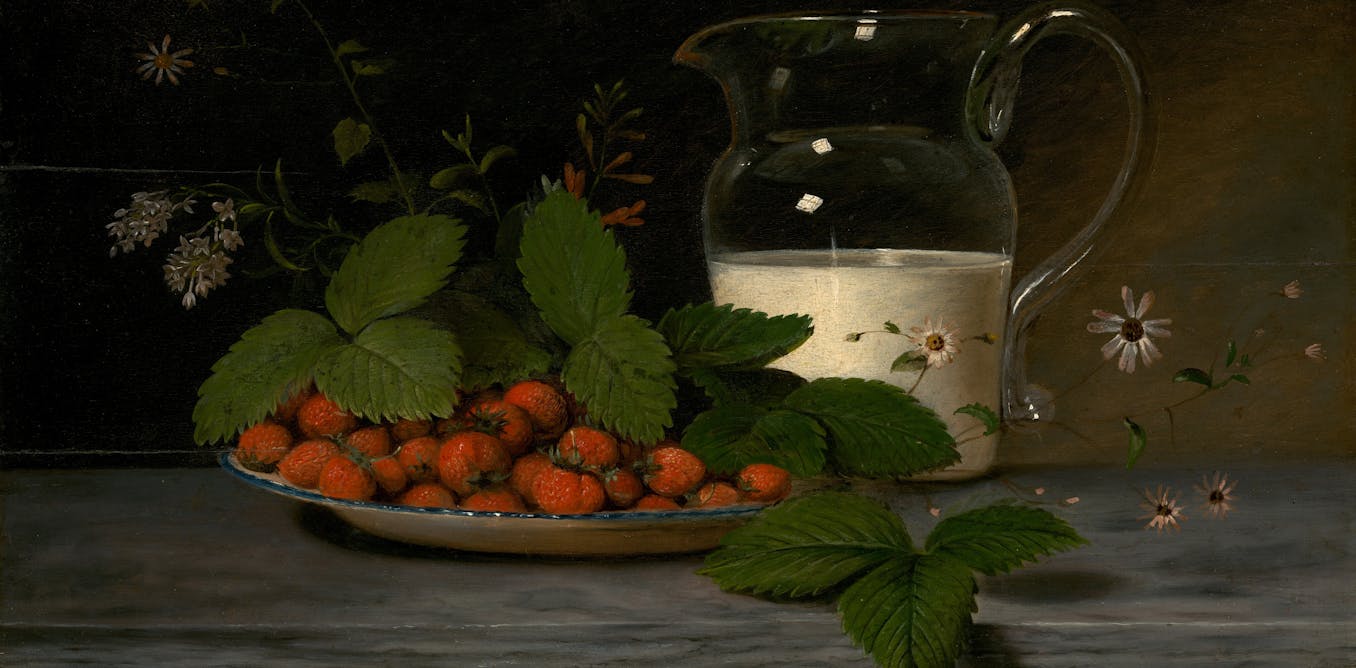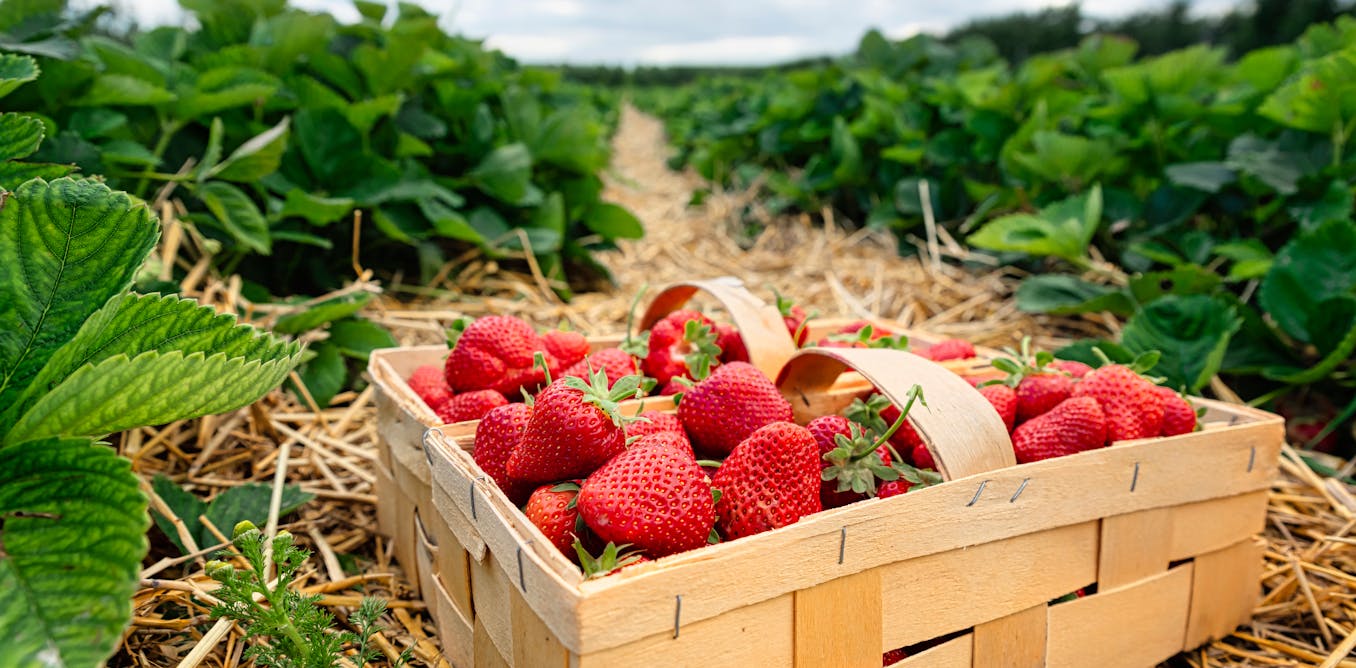Wimbledon is all about strawberries and cream (and of course tennis). The club itself describes strawberries and cream as “a true icon of The Championships”.
While a meal at one of the club’s restaurants can set you back £130 or more, a bowl of the iconic dish is a modest £2.70 (up from £2.50 in 2024 – the first price rise in 15 years). In 2024 visitors munched their way through nearly 2 million berries.
Strawberries and cream has a long association with Wimbledon. Even before lawn tennis was added to its activities, the All England Croquet Club (now the All England Lawn Tennis & Croquet Club) was serving strawberries and cream to visitors. They would have expected no less. Across Victorian Britain, strawberries and cream was a staple of garden parties of all sorts. Private affairs, political fundraisers and county cricket matches all typically served the dish.
Alongside string bands and games of lawn tennis, strawberries and cream were among the pleasures that Victorians expected to encounter at a fête or garden party. As a result, one statistician wrote in the Dundee Evening Telegraph in 1889, Londoners alone consumed 12 million berries a day over the summer. At that rate, he explained, if strawberries were available year-round, Britons would spend 24 times more on strawberries than on missionary work, and twice as much as on education.
Looking for something good? Cut through the noise with a carefully curated selection of the latest releases, live events and exhibitions, straight to your inbox every fortnight, on Fridays. Sign up here.
But of course strawberries and cream were not available year-round. They were a delightful treat of the summer and the delicate berries did not last. Victorian newspapers, such as the Illustrated London News, complained that even the fruits on sale in London were a sad, squashed travesty of those eaten in the countryside, to say nothing of London’s cream, which might have been watered down.
Wimbledon’s lawn tennis championships were held in late June or early July – in the midst, in other words, of strawberry season.
Eating strawberries and cream had long been a distinctly seasonal pleasure. Seventeenth-century menu plans for elegant banquets offered strawberries, either with cream or steeped (rather deliciously, and I recommend you try this) in rose water, white wine, and sugar – as a suitable dish for the month of June.

National Galleries of Scotland, CC BY-NC
They were, in the view of the 17th-century gardener John Parkinson, “a cooling and pleasant dish in the hot summer season”. They were, in short, a summer food. That was still the case in the 1870s, when the Wimbledon tennis championship was established.
This changed dramatically with the invention of mechanical refrigeration. From the late 19th century, new technologies enabled the global movement of chilled and frozen foods across vast oceans and spaces.
Domestic ice-boxes and refrigerators followed. These modern devices were hailed as freeing us from the tyranny of seasons. As the Ladies Home Journal magazine proclaimed triumphantly in 1929: “Refrigeration wipes out seasons and distances … We grow perishable products in the regions best suited to them instead of being forced to stick close to the large markets.” Eating seasonally, or locally, was a tiresome constraint and it was liberating to be able to enjoy foods at whatever time of year we desired.
As a result, points out historian Susan Friedberg, our concept of “freshness” was transformed. Consumers “stopped expecting fresh food to be just-picked or just-caught or just-killed. Instead, they expected to find and keep it in the refrigerator.”

bonchan/Shutterstock
Today, when we can buy strawberries year round, we have largely lost the excitement that used to accompany advent of the strawberry season. Colour supplements and supermarket magazines do their best to drum up some enthusiasm for British strawberries, but we are far from the days when poets could rhapsodise about dairy maids “dreaming of their strawberries and cream” in the month of May.
Strawberries and cream, once a “rare service” enjoyed in the short months from late April to early July, are now a season-less staple, available virtually year round from the global networks of commercial growers who supply Britain’s food. The special buzz about Wimbledon’s iconic dish of strawberries and cream is a glimpse into an earlier time, and reminds us that it was not always so.

The post “How strawberries and cream were a rare and exciting treat for Victorians – and then became a Wimbledon icon” by Rebecca Earle, Professor of History, University of Warwick was published on 06/27/2025 by theconversation.com




































Leave a Reply